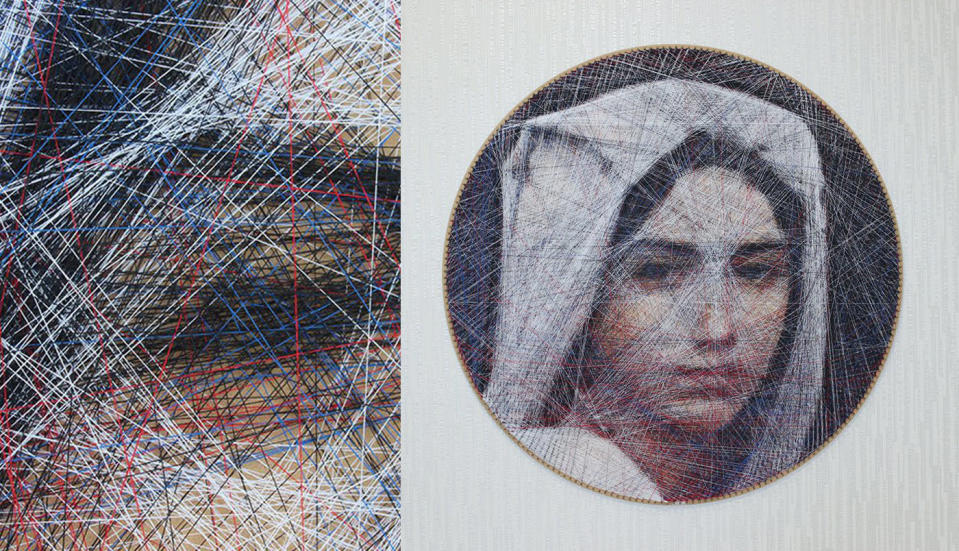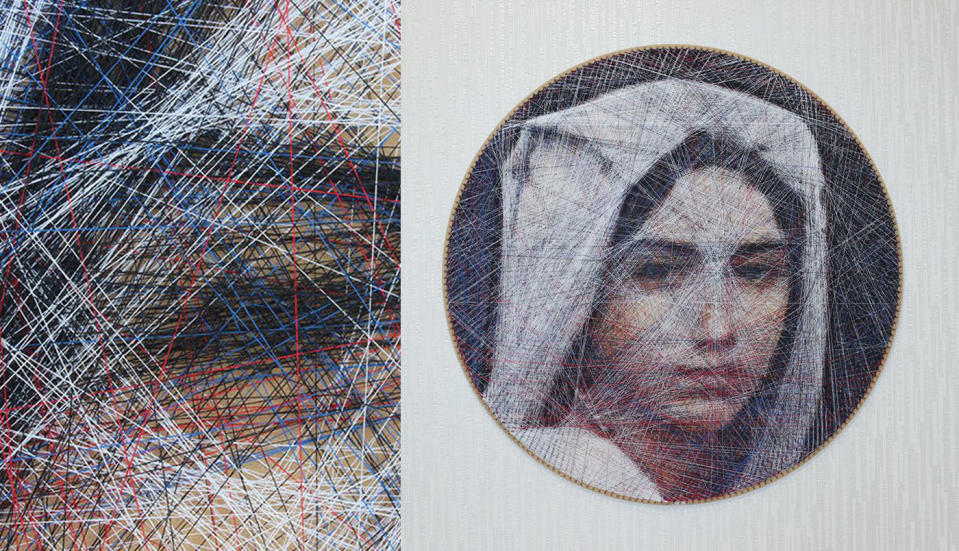Algorithms help an artist tease portraits out of thread
Our brains are great at forming images out of mishmashes and blotches of color, as a pointillist will tell you. Artist Ani Abakumova has taken that idea and applied it to simple colored threads to create incredible woven art. Creating thread art isn't as simple as painting dots, however, so her husband Andrey Abakumova developed an algorithm that lets her weave the threads to form lifelike representations of artworks like the Mona Lisa and Girl with the Pearl Earring.
You might remember this kind of thing from the string art kits you played with as a child, but what Abakumova has done is many orders of magnitude more complex. The physical labor required is daunting, with around 8,000 separate pieces of thread over 2.5 miles long needed for each piece. The algorithms are a very necessary part of that process, figuring out where to weave, overlay and overlap the colored threads.
The algorithms perform around two billion calculations to generate each pattern. From there, Abakumova can follow the instructions and adjust where needed to create each work. "Without a computer program, it would not be possible for the human eye to create something like this," Andrey told Story Trender. "My program analyzes millions of possibilities of how to place the threads and when it finds the result that best matches the photograph, it stops counting."
Normally, string art is done using CMYK (cyan, magenta yellow and black) patterns, but thanks to Andrey's algorithms, Abakumova can go in any direction she wants. Some, like her Mona Lisa use use five different thread colors (black, white, yellow, green and red), while others use limited palettes to match the theme of the original artist, like Lady Lilleth above (black, white, red and orange). A typical work measures around 30 inches in diameter.
Her work was inspired by algorithmic knitting artist Petros Vrellis and she started out by weaving black and white pieces before moving onto color. "I enjoy seeing how mathematics can help create beautiful things," she said.


